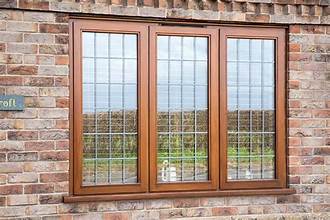Timber windows are timeless, elegant, and known for adding character to any home. Unlike UPVC or aluminium frames, timber windows offer natural warmth, charm, and authenticity. They can last for decades if properly cared for, making them a worth while investment. However, because they are made from natural materials, they do require more attention than synthetic alternatives.
If you’re wondering how to extend the life of your timber windows, this guide will walk you through the best maintenance and care practices to keep them looking beautiful and functioning well for years to come.
Why Timber Windows Need Special Care
Wood is a natural material, which means it reacts to the environment. Exposure to sunlight, moisture, and fluctuating temperatures can cause timber to expand, contract, or degrade over time. Without proper maintenance, timber windows may suffer from issues like rot, warping, fading, or sticking frames.
The good news is that with regular care, you can preserve the natural beauty of timber and ensure your windows remain strong, efficient, and durable.
Regular Cleaning
One of the simplest yet most effective ways to care for timber windows is regular cleaning. Dirt, dust, and pollutants can build up on the frames, leading to staining or surface damage.
- How to clean timber frames: Use a soft cloth or sponge with warm soapy water. Avoid abrasive cleaners or harsh chemicals, as these can damage the finish.
- Cleaning frequency: Aim to clean your timber windows every 2–3 months, or more frequently if you live in a high-pollution or coastal area.
- Glass cleaning: Use a mild glass cleaner or a mixture of vinegar and water to keep the glass panes spotless.
By keeping the frames and glass clean, you not only maintain the appearance but also prevent long-term damage.
Inspecting for Damage
Regular inspections are key to catching small problems before they turn into costly repairs. At least twice a year, check your timber windows for:
- Peeling or cracking paint/varnish
- Signs of rot or soft spots in the wood
- Condensation or moisture build-up
- Gaps or drafts around the frames
- Difficulty in opening or closing the window
If you spot any issues early, simple repairs can often solve the problem before it worsens.
Repainting and Resealing
One of the most important parts of timber window maintenance is keeping them well-coated with paint, varnish, or sealant. These protective layers shield the wood from moisture, UV rays, and dirt.
- How often should you repaint or reseal?
Typically, every 3–5 years, depending on the exposure of your windows to weather conditions. South-facing windows may need attention more often due to sun exposure. - Steps for repainting or resealing:
- Sand the surface lightly to remove old or flaking paint.
- Clean the frame thoroughly to ensure a smooth surface.
- Apply a primer if needed.
- Use high-quality exterior wood paint or varnish for a durable finish.
Not only does repainting protect the wood, but it also refreshes the appearance of your home.
Preventing Moisture Damage
Moisture is the biggest threat to timber windows. If water penetrates the wood, it can lead to swelling, rot, or mould growth.
- Keep seals in good condition: Check the rubber seals and weatherstrips regularly. Replace them if they are worn out.
- Maintain proper drainage: Ensure that water is not pooling on or around the window frame. Clean out any dirt or debris from drainage channels.
- Ventilation: Proper indoor ventilation can reduce condensation on the windows, helping to protect the timber.
By keeping moisture under control, you’ll significantly extend the lifespan of your windows.
Seasonal Maintenance
Timber windows benefit from seasonal checks:
- Spring/Summer: Inspect for fading, cracks, or peeling caused by sun exposure. Touch up paint if needed.
- Autumn/Winter: Check for drafts, ensure seals are intact, and treat any small signs of rot before wet weather worsens the problem.
This proactive approach helps you stay ahead of seasonal wear and tear.
Lubricating Hardware
The hinges, locks, and handles of timber windows also need attention. Over time, they can become stiff or corroded, making the windows harder to operate.
- Lubricate moving parts: Use a light oil or silicone spray on hinges and locks every 6–12 months.
- Check screws and fixings: Tighten any loose components to prevent strain on the window frame.
Smooth operation not only improves usability but also prevents unnecessary stress on the timber.
Repairing Minor Issues
Small problems like scratches, dents, or chips are common with timber but are usually easy to fix:
- Minor scratches: Lightly sand and reapply varnish or paint.
- Small cracks: Fill with wood filler, sand, and repaint.
- Rot patches: Cut out the affected area and treat the remaining wood with a wood preservative before filling or replacing.
Addressing minor issues quickly prevents them from spreading and saves money in the long run.
When to Consider Professional Help
While regular cleaning, painting, and inspections can be done by homeowners, there are times when professional help is necessary. If you notice extensive rot, warped frames, or persistent condensation between glazing, call a specialist. They can assess whether repair or replacement is the best option.
Conclusion
Timber windows are more than just functional—they bring warmth, style, and character to your home. With the right care, they can last for decades while maintaining their beauty and performance.
By committing to regular cleaning, timely repainting, and proactive inspections, you can protect your investment and avoid costly repairs. Remember to watch for moisture, maintain hardware, and address small issues before they escalate. Contact Us
Caring for your timber windows doesn’t have to be difficult; it simply requires consistency. When properly maintained, they will continue to add charm and efficiency to your home for many years to come.





